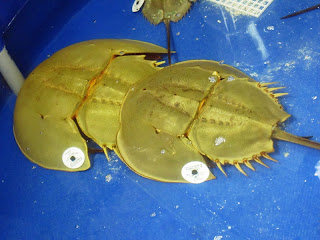I was invited to join CityU Business & Industrial Club (CUBIC) Happy Hour Tea Gathering from Life Science Group on 19 Oct 2012. Three special talks of CityU's research from the Department of Biology and Chemistry (BCH) were shared.
Group photo before the talkDr. Hon Yeung Cheung (Associate Professor, BCH Department, CityU) was the first speaker and his topic entitled “Comprehensive Authentic System for the Quality Assurance of Edible Bird’s Nest Based on its Physical, Chemical and Biochemical Properties”. Edible Bird's Nest (EBN) also called "Yen Wo" (燕窩) and it was a prestigious and expensive food.
EBN has high contents of protein carbohydrate, bioactive mucoid & epidermal growth factor (EGF). EGF can stimulate the proliferation of various epidermal and epithelial tissues. Dr. Cheung advised that EBN was good for young but not too much for people after 40. It is because EGF enhanced the growth of both good cell and mutated cell. The following chart showed the classification of Yen Wo (In Chinese).
Dr. Cheung introduced his authentic system which could efficiently and comprehensively distinguish genuine and counterfeit EBN products and its analyses requirement showed below:
- The chemical analysis method for the monose assay by GC-MS
- The surface morphology observation by SEM
- The biological immunoblotting method for the determination of epidermal growth factor in edible bird's nest.
The following GC-MS analysis separated Imperial EBN (官燕), Feather EBN (毛燕) and Grass EBN (草燕) based on the peak of NANA.
The SEM photos also distinguished three EBNs and Fake EBN.
The level of EGF in raw and instant EBN samples was described.
Finally, Dr. Cheung concluded that real EBN should present five monoses (D-Mannose, D-Galatose, N-Acetyl-D-galactosamine, N-Acetyl-D-glucosamine, and N-Acetylneuraminic acid), protein network and the EGF. By combining the chemical, the physical as well as the biochemical data, genuine and high quality EBN could be accurately determined.
Dr. Michael HW Lam (Associate Professor, BCH Department, CityU) was the second speaker and his presentation was “Solid-state Biogenic Amine Sensing Tag”. Dr. Lam said that we smelled rotten food because of biogenic amines such as cadaverine, histamine, putrescine, trimethylamine and spermidine.
Therefore, Dr. Lam used indicator-displacement chemosensing of biogenic amines to develop his product.
The following diagram showed the mechanism.
Then he mentioned the prototype desk-top sensor for the screening of food products for biogenic amines. However, the customer feedback was not convenience because of using liquid type indicator.
After that Dr. Lam’s research team developed a thin-film with coating of chemosensing material which can detected the amine.
The last speaker was Dr. Shengchun Wu (Research Follow, State Key Laboratory in Marine Pollution, CityU) and his topic named “Introduction of State Key Laboratory in Marine Pollution (SKLMP)”.
SKLMP consolidated different researchers from six universities in Hong Kong.
Some ecotoxicology researches were introduced.
After that we visit the SKLMP.
Dr. Xue Ping explained the Transgenic Zebrafish (Medaka) produced green fluorescence light under Estrogen which in our environment or food.
The Medaka is very small.
Then we visited another laboratory for breeding horseshoe crabs.
The researcher demonstrated the different stage of growth for Horseshoe Crabs.
The baby crabs is very small.
The removed shells in the different stage of growth stage were demonstrated.
How to distinguish the male and female of Horseshoe Crabs? The first one is female and her shell head is round. The second one is male and his shell head has two concave points.
The application of the Horseshoe Crabs’ blood was for Limulus Amebocyte Lysate (LAL) Testing.
Reference:
CityU Business & Industrial Club (CUBIC) - http://www6.cityu.edu.hk/kto/CUBIC-Intro.html
Medical Devices and Limulus Amebocyte Lysate (LAL) Testing - http://qualityalchemist.blogspot.hk/2008/03/medical-devices-and-limulus-amebocyte.html






















沒有留言:
發佈留言